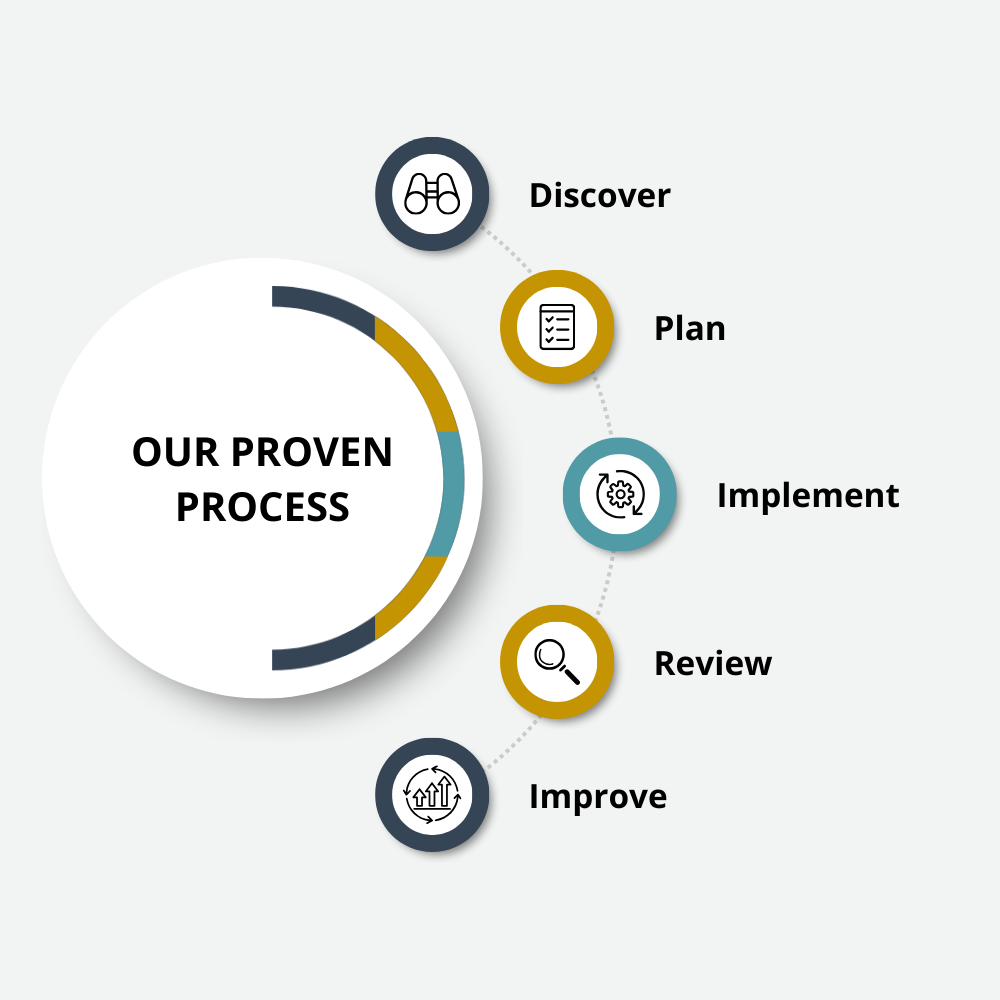With the New Year quickly approaching, we would like to take the opportunity to thank you for your continued trust. As always, our primary goal is helping you achieve yours. To that end, there are several planning opportunities to consider implementing before December 31.
If you are a client of JFS Wealth Advisors, your advisory team has been working with you during the year to advise you on many of these areas, if they are applicable in your situation. If any of the topics below resonate with you, this can serve as a reminder to call your team of financial advisors to assure we have addressed all potential tax planning opportunities for you before the year ends.
Tax Cuts and Jobs Act Reform
The Tax Cuts and Jobs Act (TCJA) signed into law at the end of 2017 made significant changes to the U.S. Tax Code, affecting virtually every taxpayer. The changes impacting individuals largely centered on the elimination of personal exemptions and certain itemized deductions in exchange for an increase in the standard deduction and lower rates. Although you may not itemize your deductions, year-end planning continues to be an integral part of financial planning and minimizing your overall tax liability. More about this and other planning changes under TCJA reform can be found on our website’s Knowledge Center.
Tax Loss Harvesting
While unpleasant, this year’s market volatility has presented a tax planning opportunity we haven’t seen in quite some time—tax loss harvesting. Depending on when an investment was acquired, there may be unrealized losses that can be harvested through targeted sales. The proceeds from the sales are then immediately reinvested into the asset class using a similar product. Doing this preserves the investment allocation for when the market begins to rise but also frees up the tax losses which can be used to offset capital gains (currently and in the future). The deduction for capital losses in excess of capital gains is limited to $3,000 per year with excess losses carrying forward to future years.
For example, by harvesting a tax loss of $10,000 and offsetting it against $10,000 of long-term capital gains, the federal tax impact is a reduction in taxes of about $1,500. If there are no capital gains to offset, $3,000 of the losses could reduce other taxable income and provide a tax savings of anywhere between $700 to $1,200, depending on individual tax brackets. Plus, $7,000 would be carried forward to next year to offset capital gains or reduce other taxable income.
For clients of JFS Wealth Advisors, we regularly screen your portfolio for these opportunities and will execute trades if material enough to positively impact your situation.
Maximizing Employer-Sponsored Plan Contributions
Now is also a good time to review contributions to your employer-sponsored plan and make sure you are contributing enough to receive the full amount of your employer match and/or ensure you are maximizing contributions to the extent possible, including catch-up contributions. For 2018, the maximum employee contribution to a 401k or 403b plan is $18,500 and the maximum catch-up contribution for those 50 and older is an additional $6,000.
Required Minimum Distributions
If you are age 70 ½ or older, or you are the beneficiary of an inherited IRA, you have until year-end to complete your annual required minimum distribution (RMD). Your distribution amount is based on your age and the value of your Traditional IRA and/or employer-sponsored plan (e.g. 401k or 403b) as of December 31 of the prior year. You can generally avoid taking a RMD from your employer plan if you are currently employed, unless you are an owner. While JFS does these calculations for our clients to ensure timely distributions, if there are retirement accounts outside of JFS, please make sure you coordinate with the respective custodian(s) prior to year-end. The penalty for missing the year-end deadline is a hefty 50% of the amount not distributed!
Charitable Contributions
Bunching
In order to benefit from itemizing deductions under TCJA reform, individuals may need to “bunch” expenses. Bunching is a tax strategy commonly associated with charitable contributions, medical expenses, real estate taxes, and state and local income taxes. Bunching essentially pushes itemized deductions that could be paid in the current or subsequent year into a single tax year to maximize itemized deductions. With the increase in the standard deduction ($12,000 for an individual or $24,000 for a married couple in 2018), many individuals may not be able to itemize deductions without bunching.
The bunching strategy works particularly well for charitable contributions because they are entirely discretionary. For those who are charitably inclined, it may make sense to give in December for both the current year and the subsequent year; thus, pushing two years of charitable contributions into a single tax year. By doing this, you may be able to benefit by itemizing for the current tax year and also by taking the standard deduction in the subsequent year. It is important to remember that charitable contributions for individuals are only deductible in the year payment is made.
Appreciated Securities
You may also consider making charitable contributions with appreciated securities rather than cash. This allows you to receive the benefit of a charitable deduction for the fair market value of the securities, up to a specified amount of your adjusted gross income, while avoiding capital gains on the sale of securities—a double advantage!
Qualified Charitable Distributions
For individuals age 70 ½ and older, a qualified charitable distribution (QCD) is an otherwise taxable distribution from an IRA that is paid directly from the IRA to a qualified charity. The QCD goes toward satisfying your required minimum distribution but is not included in taxable income and the charitable contribution is not included as an itemized deduction. Due to the recent tax law changes, fewer individuals will benefit from itemizing deductions, so this may be a good option for those whose charitable contributions would not be deductible due to the increase to the standard deduction.
Donor-Advised Fund
If you wish to take advantage of the charitable contribution deduction but do not have a specific charity in mind, or you would prefer to spread your contributions over time, a donor-advised fund (DAF) may be the answer. Contributions to a DAF are deductible charitable contributions held in a separate account that can be distributed to qualified charitable organizations over whatever timetable you wish. Undistributed funds may be invested in a number of different strategies corresponding with your charitable goals.
DAFs can be particularly valuable to those who make regular charitable contributions and/or those who have a particularly high income tax year. This strategy may also be beneficial for those who would prefer to bunch several years’ worth of charitable contributions into a single year. DAFs can also be great way to introduce children or grandchildren to charitable giving by allowing them to participate in the grant process.
Roth IRA Conversions
Roth IRA conversions must be completed by December 31 of each tax year. In 2010, Congress eliminated the income restriction on Roth conversions (but NOT contributions). This provides an opportunity to convert some or all of a Traditional IRA to a tax-free Roth IRA by including any taxable portion of your income in the year of conversion. If you have a low income or loss year, it might make sense to convert a portion of your Traditional IRA to a Roth IRA to take advantage of a lower tax bracket. Then, not only will the investment grow tax-free for the rest of your life, but there is also no required minimum distribution at age 70 ½ so the assets can continue to grow tax-free. And the best part? Distributions are tax-free.
If you are considering a Roth IRA conversion, year-end tax planning is critical because recent changes in legislation eliminated the ability to re-characterize a Roth IRA conversion. That is, you can no longer change your mind if the facts determine that the conversion didn’t work optimally. In prior years, a Roth IRA conversion could essentially be undone by the due date of the tax return (including extensions) if the value of the account declined or there was more taxable income than expected. If you believe you are a candidate for a Roth IRA conversion, please give us a call as soon as possible so we can help you evaluate your options.
Financial Gifts
Finally, if you have given, or are planning to make a financial gift to someone other than a charitable organization, you can gift up to $15,000 ($30,000 for couples) per beneficiary, per year without having to file a gift tax return or use any portion of your lifetime gift exemption. These gifts need to be completed by year-end.
Are you interested in making a gift but concerned about whether the beneficiary is ready for the money? Give us a call to discuss your options.
Please don’t hesitate to contact one of our wealth advisors with questions related to topics discussed here or any other matters important to you. It is our privilege to help you plan and build for the future, and we look forward to continuing to work with you in the years ahead.




















